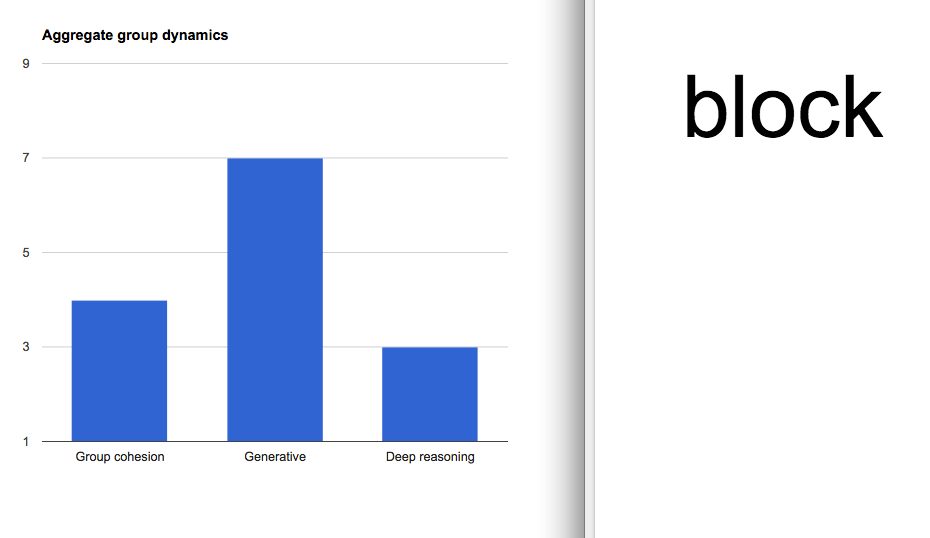At Stanford's Center for Design Research I'm a Research Assistant in the Design Innovation Acceleration Lab where we study design team interaction with the goal of helping people and teams become more productive designers. We analyze design team interaction using a symbol language called Iteraction Dynamics Notation. I balance 20 hours of research work a week with being a full time student in Mechanical Engineering.
I manage 3 analysts who code design team interaction video using IDN. I lead our lab meetings every week by talking about our goals for the project, recapping what we did that week, and going over any questions and ambiguity in our coding that we need to address together. One of my biggest efforts has been maintaining context for the analysts, as rote data analysis can become quite dull. I want to make sure the analysts understand exactly why we are taking large amounts of time to carefully improve our data analysis techniques.
I have worked on developing and evaluating an inter-coder reliability metric, and on refining the Interaction Dynamics Notation to better represent the design process. I am prototyping real-time feedback tools for design teams to to help teams make their conversations more productive.
In the late winter and spring of 2015 I am scheduled to lead design thinking workshops in one of Stanford's d.school classes, record teams and their interactions, and give the teams actionable feedback on their design thinking.

An rapid real-time feedback prototype made using Google Docs. As the conversation conintued the designers would see how their conversation was progressing.

One of our sessions where we prototyped a real-time feedback tool for designers. We gave feedback to a project group in one of Stanford's graduate mechanical engineering sequences.
One of my biggest duties in the winter of 2015 has been developing an inter-reliability metric for the video coding that our analysts do. I researched different inter-reliability metrics such as Cohen's Kappa and analyzed them based on the needs for our project.
I stumbled up Levenshtein's distance when researching string comparison methods used in computer science and bioinformatics. As we are comparing the strings that our coders create, rather than just comparing the number of times they rate things a certain way, this metric worked well for us. I am currently in the midst of researching and writing a paper on the use of Levenshtein's distance in the context of design research.
Below is one of the flow charts that I made together with our analysts. As conversations and interactions have a large amount of ambiguity, one of our efforts this quarter has been to reduce our ambiguity and increase our level of agreement. One way we are addressing this goal is by creating flow charts that we can follow whenever we are unsure about whether to code a certain symbol.

A flow chart to better define a "question" in Interaction Dynamics Notation
